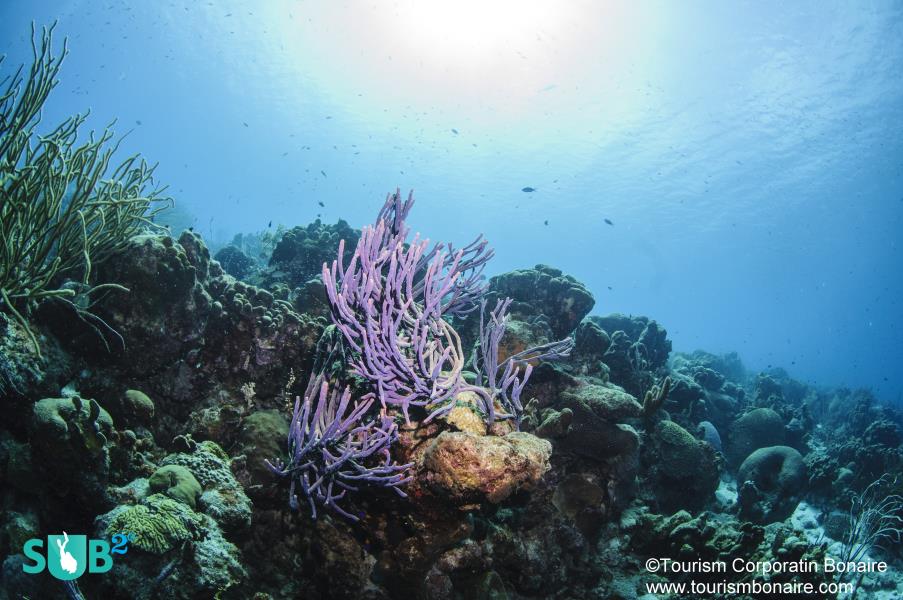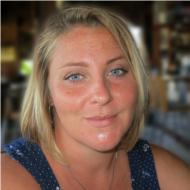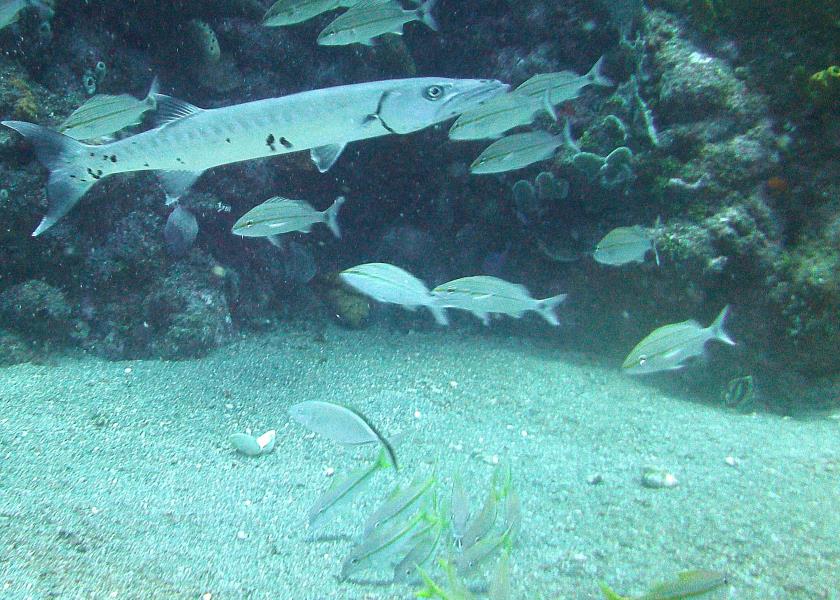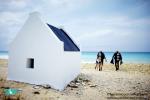 Advice on Scuba Diving in Saba, Caribbean Netherlands
Advice on Scuba Diving in Saba, Caribbean Netherlands
Part 1: Overview of Scuba Diving in Saba, (Caribbean Netherlands)
Saba is the smallest municipality of the Caribbean Netherlands, measuring only five square miles. This island is tiny, but it packs a punch when it comes to exploratory sports such as scuba diving and hiking. With only 1,500 inhabitants, Saba is a friendly and welcoming place; visitors soon feel at home walking around the four quaint villages. A peaceful atmosphere exists, complementing the island's dramatic volcanic scenery, both above and below the waterline.
In 1987, the Saba Conservation Foundation was established to protect the stunning natural and cultural heritage of the island. Sabans are very proud of their unspoiled, idyllic island, and visitors should be respectful of the accomplishments that they have achieved to preserve and protect their resources. Divers must dive with one of the three Saban dive centers in the Marine Park.
The Saba Marine Park extends around the island, down to a depth of 60m (200ft). There is zoning in place, for the various recreational and commercial uses, and permanent marker buoys were installed to protect the reef. The conservation work has paid off and the dive sites are truly stunning to dive, with a healthy diversity of marine life. Pelagic fish, reef fish, turtles, and eels are all abundant. The fortunate can also spot manta, hammerhead, rays, and whale sharks. Frogfish and seahorses are a delight to find too.
There are plans in place to protect the land. The Saba National Land Park (also known as the Elphin Forest Reserve) is located on top of Mount Scenery, a dormant volcano - its highest point reaching 870m. There are many nature trails and walks that are marked out and maintained by the Saba Conservation Foundation. Hikers will enjoy the rain forest and historic ruins of settlements dating from 1630. Trail maps are available but some hikes are more enjoyable with a guide.
The climate on Saba is temperate, with an average air temperature of 80F. Due to the volcano and easterly trade winds, clouds do form and the evenings become cooler. Dutch is the official language, however, English is widely spoken, with a local dialect. US Dollars are the official currency. There is a good choice of small restaurants throughout the villages, and cuisine varies from West Indian Creole, to European, Chinese, and American. For a certain night of the week, each restaurant or bar will become the "place to be", with fun, entertainment, and music. It's a small island so you will soon hear where the fun is happening!
Part 2: Dive Sites, Marine Life & Environment in Saba, (Caribbean Netherlands)
Saba has exceptional scuba diving around the 30 pristine dive sites; the Caribbean Sea teems with a rich diversity of marine life. Diving is year-round, but there are seasonal differences in water temperature. In winter months the temperatures range from 77-80°F; in the summer months it warms up to around 80-85°F. A long 3mm should be adequate, unless you are doing a lot of deeper diving.
All levels of divers are catered for in Saba, with plenty of dives to suit every experience rating. Spectacular volcanic formations add interesting topographical features to the shallower the patch reefs. Deep-water pinnacles and seamounts are covered in huge sponges and corals and circled by schools of fish. The dive sites can be categorized into five main areas: The Pinnacles, The Windwardside, Tent Bay, Ladder Bay, and Well's Bay/Torrens Point. The Windwardside is the most weather dependent; Well's Bay and Torrens Point offer more protection on the northwest of the island.
Saba’s world-famous pinnacles and seamounts include Third Encounter, The Eye of the Needle, Twilight Zone, Outer Limits, Mt. Michel, and Shark Shoals. Covered in sea fans and sponges, the pinnacles dramatically descend to depths beyond recreational diving limits; the dive operators normally set maximum profiles of 35-40m (120-130ft). Schools of reef fish, large groupers, and horse-eye jacks are common. Nurse, reef, and blacktip are the most common sharks to see in this area, however, there is the chance of glimpsing rare hammerheads, bull, or tiger sharks too. These offshore sites are where you may get a special encounter with larger pelagic such as manta ray. Man O’ War Shoals, Diamond Rock, and Green Island are shallower pinnacles, but just as interesting, with sandy bottoms at 21-24m (70-80ft).
The Windwardside sites include Greer Gut, Giles Quarter, Big Rock Market, Hole in the Corner, David's Dropoff, Core Gut, and Cove Bay. These Atlantic-facing dives are mostly sandy-bottomed, with volcanic coral-encrusted boulders. Hard corals such as elkhorn, plate, and boulder dominate; visibility is normally very good. Divers will also notice the variation between the species of creatures and fish, to those found on the Leewardside sites.
Custom House, Porites Point, Babylon, Ladder Labyrinth, Hot Springs, and Ray 'n' Anchors make up the dive sites of Ladder Bay. Hot, sulphur-stained sand demonstrates the volcanic origins of the island; it is the old lava flow that has shaped the underwater topography of spur and groove formations. Nurse sharks and tarpon are common to see, and the sea grass encourages grazing fish life such as turtles, eels, eaglerays, and seahorses.
Tent Reef Deep and Tent Reef Wall are both great dives located in Tent Bay. Garden eels, razor fish, and southern stingrays are a highlight. Black corals decorate the swim-through at Tent Reef, and bright sponges and corals cover the thrilling vertical wall dive. Buddha, is the resident barracuda to look out for!
Well’s Bay and Torrens Point are highly protected by their position on the northwest coast. Perfect for shallow dives, there is lots of time to admire the wide variety of eels and creatures. Large boulders intersperse patch reef with small caves and swim-throughs.
Part 3: Dive Shops, Airports & Logistics of Diving in Saba, (Caribbean Netherlands)
Saba has three dive shops - Saba Deep Dive Center, Saba Divers, and Sea Saba Dive Center. PADI, CMAS, TDI, and NAUI training agencies are represented; all the centers have nitrox and equipment rental. Saba's dive centers have highly experienced diving teams, with international instructors and very good safety records. The instructors are multilingual with the main languages being Dutch, English, German, and Spanish. There is a recompression chamber on the island, donated by the Dutch navy. Diving is 365 days of the year on Saba!
Saba Deep Dive Center is owner-operated by Tony and Cheri Waterfield, who hail from the US. They offer a personalized service with small dive groups and a flexible schedule that is based on three guided dives a day. PADI courses are available - "Big" Mike Austin is their extremely experienced instructor, as well as other international staff. They run two boats - the customized and very comfortable Jolly Mon (maximum of 8-10 divers); and Mystery, which is a smaller, faster boat that takes 6 divers. Snorkel trips and night diving can be arranged. Established in 1981, this was the first dive center on the island, and is located underneath "In Two Deep Bar & Restaurant".
Located at Fort Bay, is Saba Divers and Scout's Place Dive Hotel. This all-in-one dive resort and hotel is owner-operated by Wolfgang and Barbara Tooten from Germany. They offer free nitrox with package bookings, and the full range of PADI courses from beginner to divemaster. Blue Star and Big Blue are their two custom dive boats (32-34ft) that can take groups of up to 10-12 divers. Both boats have swim platforms and space for camera equipment. Guided diving, snorkelling trips, and night dives are available; the team at Saba Divers will go out of their way to make your dive vacation perfect.
Sea Saba is a PADI 5 Star Dive Resort and National Geographic Center. They offer all PADI certification courses up to divemaster. The friendly team consists of experienced instructors from around the world, headed by UK/US owners John and Lynn. Sea Saba has two lovely, large 42ft customized dive boats - the M/V Giant Stride and M/V Sea Dragon - which depart with a maximum of 10 divers; leaving plenty of space on board for showers, swim platforms, and camera equipment. They have an unlimited nitrox package available and offer three guided dives a day, as well as night diving.
All flights to Saba's Juancho E. Yrausquin Airport (SAB) connect through Sint Maarten (SXM). International flights arrive daily from North America, South America, and Europe. Winair makes over five flights a day from Sint Maarten to Saba. The commercial runway on Saba is famous for being the shortest in the world, measuring just 400m! Only specially trained pilots with small aircraft or helicopters may land. If that sounds a bit too exciting, then two ferries connect from Sint Maarten - the Dawn II and The Edge. Car rentals and taxis are available once arrived on Saba.
---- Book Your Diving ----
Fill in the Form Below.
Our hand picked regional partners will deliver no obligation quotes.

Tweets by @DiveAdvisorApp
Top Dive Shops
Top Dive Sites
Reviews
Dive Logs
-
scubafan67 Sunday, August 10, 2014
Dive Types & Activities
- Training
- Reef Dive
- Underwater Photo & Video
- Boat Dive
- Drift Dive
- Multi-Level
- Training Dive




